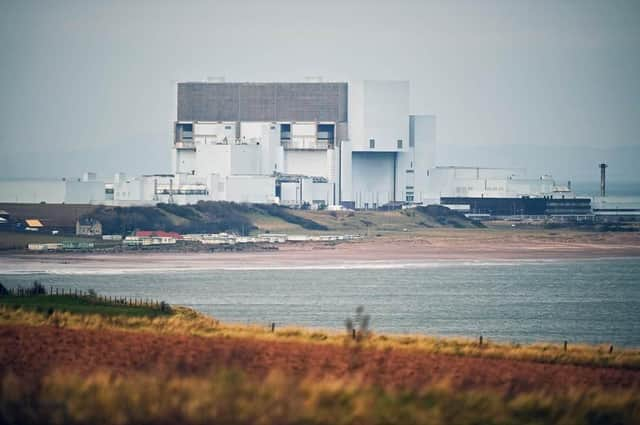Scottish ministers test attitudes to building radioactive waste facilities near homes


Ministers are looking to test public attitudes to radioactive waste management, including potentially building facilities near where people live.
The Scottish Government has budgeted up to £30,000 to commission a survey of public opinion, documents published online show.
Advertisement
Hide AdAdvertisement
Hide AdQuestions will cover topics such as trust in the government and the nuclear industry, as well as "attitudes towards constructing facilities for radioactive waste in proximity to where people live, if proven to be safe and resulting in significant economic benefits".
The move forms part of the Higher Activity Waste Implementation Strategy, which was published in 2016 and sets out long-term plans for disposing of such material.
The Scottish Government said it was a “very long-term programme of work” and no decisions had been made regarding locations.
A tender document says the survey “will help improve Scotland’s environment by informing radioactive waste policy makers about the views of Scottish citizens, as storage and disposal options are considered as part of Scottish ministers’ obligations to manage the nuclear legacy clean-up programme”.
It adds: “The nuclear waste landscape in Scotland remains complex, with a mixture of civilian and military nuclear waste liabilities requiring careful management to help protect people and the environment. The Scottish Government is responsible for developing national radioactive waste plans to help manage this nuclear legacy and in 2016, published its Higher Activity Waste (HAW) Implementation Strategy. This strategy included an illustrative timeline towards construction of a national nuclear waste repository and a commitment to undertake various research activities such as carrying out public attitude surveys and developing near-surface disposal concepts.”
The 2016 strategy outlines three key stages of work. The first, which lasts until 2030, includes a review of the radioactive waste that is expected to arise in Scotland. In the second, which lasts from 2030 until 2070, the Scottish Government will work with the relevant authorities to develop “a near-surface disposal concept”. In phase three, from 2070 onwards, it is anticipated that replacement near-surface storage facilities will be constructed.
The tender document says: "The primary aim of this work is to design and deliver research that will help develop a deeper understanding of the views of the Scottish public on a range of radioactive waste management issues, including safety and trust in government and industry.”
Suggested topics for questions include public perceptions of health and environmental impacts, as well as attitudes towards locating facilities near homes.
Advertisement
Hide AdAdvertisement
Hide Ad"The survey sample must be large enough to allow for robust breakdowns of the data by various factors”, the document says. “We invite tenderers to propose the most appropriate sample size but expect a minimum of 1,100 responses.”
The research is expected to be undertaken between December and January, with a budget of between £25,000 and £30,000.
A Scottish Government spokesman said it “places great importance on the need to address Scotland's radioactive waste legacy and is committed to the safe, secure and responsible management of waste with care for people and the environment”.
He added: “Our Higher Activity Radioactive Waste Implementation Strategy includes an illustrative timeline towards the construction of a national nuclear waste repository and a commitment to undertake research on public attitudes towards the disposal of radioactive waste. We are now commissioning this research to ensure public attitudes are properly considered as storage and disposal options are considered. This is a very long-term programme of work and no decisions have been made regarding the location of any future facility.”
Comments
Want to join the conversation? Please or to comment on this article.
